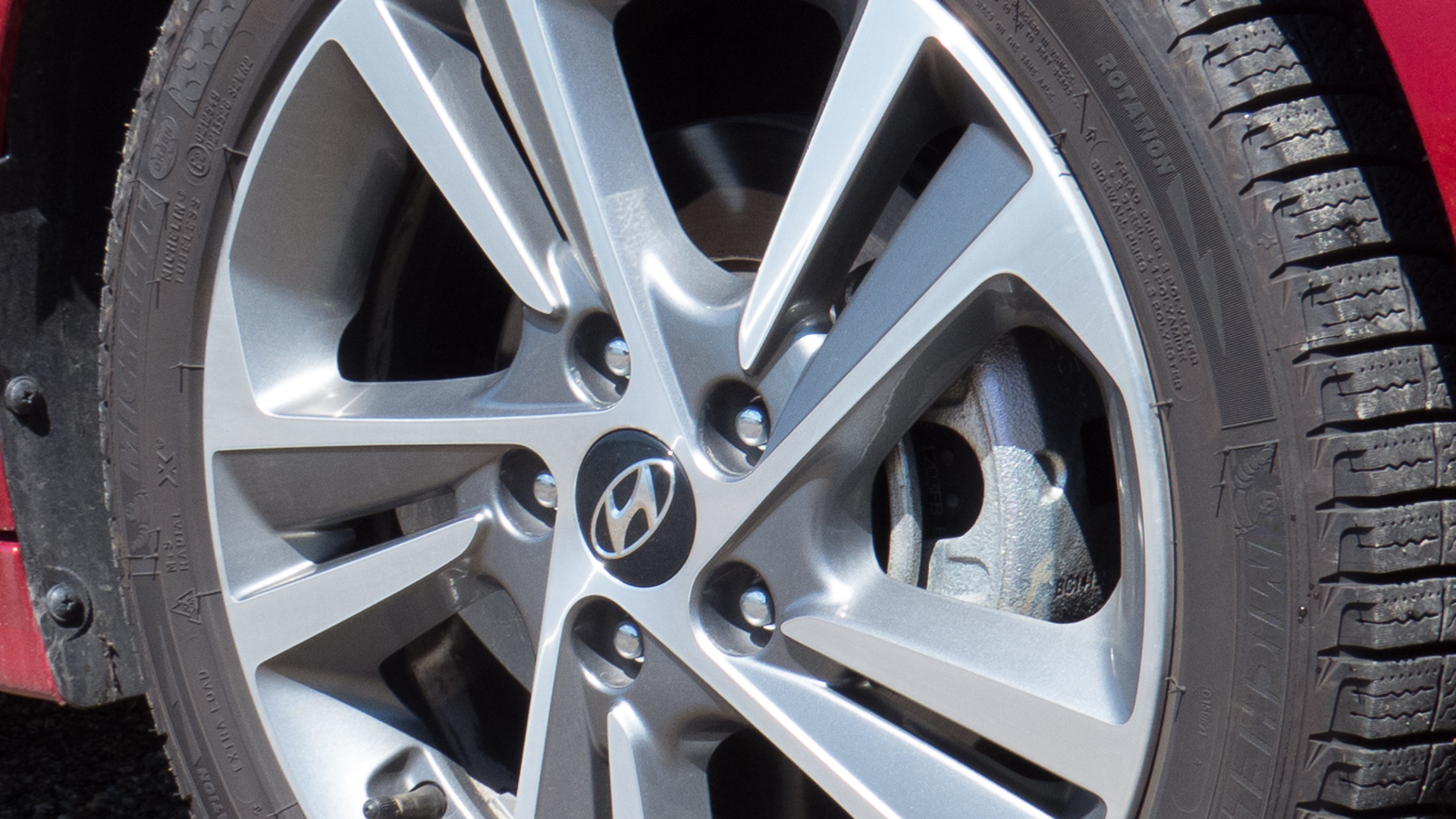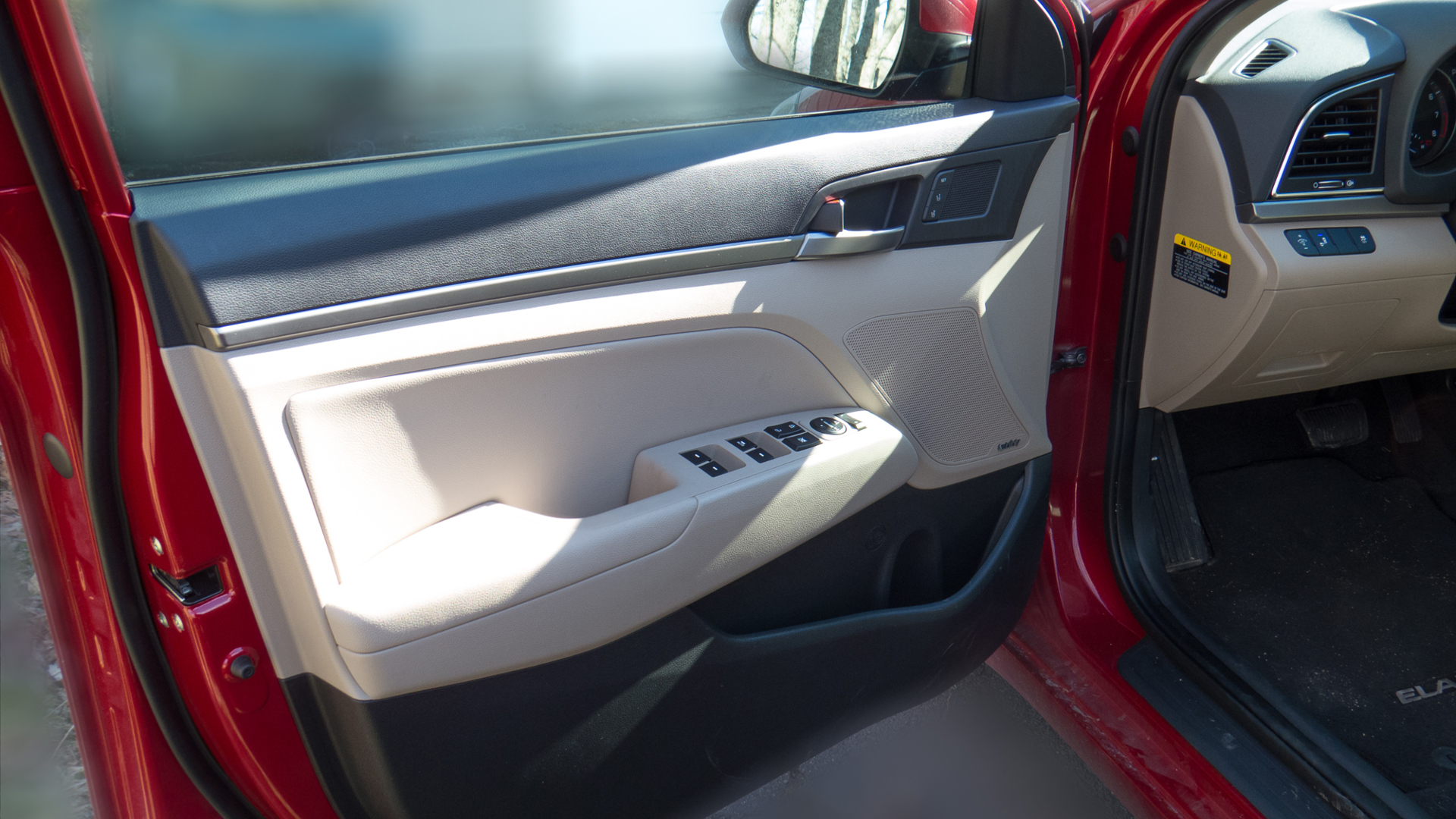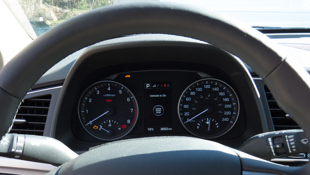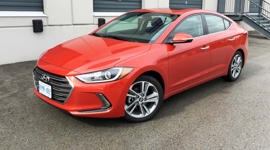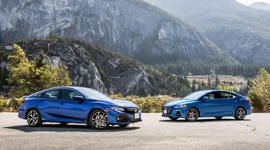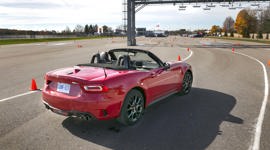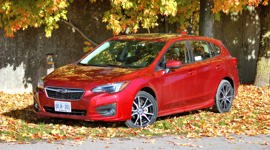Since launching in 2011, the fifth-generation Hyundai Elantra has accomplished many things. It established Hyundai as a serious contender in the compact segment, but for value instead of just low price. It came agonizingly close to beating out the perennial Canadian sales champ Civic for best selling car. But it never quite managed to be included in the same group as the Civic or Corolla without price being mentioned. "It's better than the Civic for the money", things like that. With the all-new sixth generation 2017 Hyundai Elantra, Hyundai is taking a serious shot at dropping the "for the money". The inside and outside of this car looks and feels as good as its competitors. Full stop. That said, let's take a look at the all-new Elantra and see just how it does on its own.
The first thing you see when you get in the car is that this is a very nice dash, both to the eye and to the touch. There's an 8.0-inch touchscreen with nav front and centre, a faux brushed aluminum strip separating the top and bottom, both lightly padded plastic where you first reach. The top is black, the bottom is a light beige that matches the perforated leather seats. The cluster has a 4.2-inch full colour information display that's clearly visible behind the tilt and telescoping heated leather steering wheel. My Limited trim test model has push button start and proximity keyless entry. The eight-speaker Infinity stereo has touchscreen controls, redundant knobs on the dash and controls on the wheel. There are also voice controls, which are reasonably intuitive after a quick glance at the manual. For all that, I wasn’t impressed with the audio quality, which seemed tinny and hollow, regardless of the adjustments I made.
My only real complaints in the interior were a couple of touch points that were hard plastic in a bad spot. They were both contact points for my legs, where my knee or shin hit the door panel and centre stack. The centre stack left a bruise on my shin after a week of driving, and was a sore spot for most of that time. That’s a common problem for me in compact and midsize cars, so if you’ve never hit the console with your knee you probably won’t here. If you are nodding in agreement about sharp lower dash corners, then make sure you test fit the Elantra. A small bit of padding on the door panel and dash would make a world of difference in comfort for some people.
Moving backward, rear seat room was adequate, but a tight fit for me versus the Civic or Cruze. If you have anyone in the back, you’ll want to disable the ease of entry feature which automatically moves the power seat all the way back whenever the car is turned off. If you’re sitting back there yourself and accidentally activate the feature (which isn’t easy from the back seat), you might need to make an embarrassed call for someone to help let you out.
There were a few quirks in the blind spot warning system, which wouldn’t alert you of a car beside you if you passed them, but they then lingered beside you. It only seemed to alert for cars approaching from the rear. If you signaled a lane change and there was a car there, the alert buzzer is very loud, and doesn’t stop until your signal is off or the car has moved. I know the point of it is to alert you, but since most people also use their signals to try and open up a space, a way to silence the alert would be nice without disabling it completely.
This is a well equipped car, as it should be for my test car's $26,249 sticker price. There are heated leather seats front and rear, eight-way power driver's seat, heated steering wheel, rear view camera with a very useful cross traffic alert, and blind spot warning system. There is also a power sunroof, dual zone climate control, and SiriusXM with a built in hard drive to record and replay satellite radio, or upload music from a USB drive. The navigation system also features Android Auto connectivity.
But you don’t need to jump to the Limited to get a well equipped car. Even the base L (the only trim available with a manual transmission) at $15,999 has heated front seats, power windows and keyless entry, and maybe most importantly, USB connectivity. The $18,499 LE adds the six-speed auto and Bluetooth. It also gets you A/C. The GL adds that wonderful heated steering wheel, blind spot alert, rear cross traffic alerts, LED daytime running lights, cruise control, 16-inch alloys and a 7.0-inch touch screen for the stereo with Android Auto. The $20,349 GL is the model I would pick, as it comes with most of the gadgets and tech, but without the power sunroof of the GLS. If you’re tall, you may find the top of your head making friends with the headliner in a sunroof equipped Elantra. In a car that otherwise seems spacious, that was a bit of a surprise. But for your $22,699, the GLS also gains 17-inch wheels, heated rear seats, and the proximity key system with push button start, and a proximity trunk that nicely pops the trunk when it detects you standing behind the car. It’s a handy feature when you’re carrying an armload of groceries or heavy gear.
The top spec Ultimate adds HID headlights with active cornering adjustment, adaptive cruise control, lane departure warning, and automatic emergency braking with pedestrian detection. All of the tech features can be yours for $28,799.
Under-hood on all trims is a 2.0L Atkinson cycle four-cylinder based on the 2.0L Nu engine that was available on GLS and Limited trims on the outgoing model. In this application it loses direct injection and makes 147 hp. It's not a sports car but it feels surprisingly lively and responsive in traffic, a product of the surprising sub 1400 kg curb weight. If you want more power, there is a 1.6L turbo coming later this year. There are ECO and SPORT modes that change throttle response, shift points and steering weight. I noticed little difference between them, primarily that SPORT mode holds gears longer. All three modes show some reluctance to kick down when passing and will drop a gear or two, pause, then drop another gear before finally accelerating the car. The engine is surprisingly quiet, and doesn't protest or make any unappealing sounds, even up to the 6500 rpm redline. It was also quite good on fuel, with a rating of 8.3 l/100 km city, 6.4 highway, and returning an indicated 5.9 l/100 km in my mixed driving.
The variable assist steering is acceptable once you get used just how variable it is. Low speed parking maneuvers are lighter than a '70s era domestic, high speed twists require a surprising amount of effort on the wheel. Either way the steering offers little feel other than the weight. Not even the low profile 225/45 tires on 17-inch wheels send vibrations or road imperfections back up through the wheel. The isolation is excellent for touring, commuting, or just driving around town and indeed the entire car feels rigid tight and solid even over the worst of spring's potholes, with no clunks, rattles or other unpleasant noises, but isn't endearing when you're trying to hustle the Elantra on a back road. Then you’ll find it numb, and while it is responsive, there’s nothing telling you how hard you’re pushing, or giving you any idea of what’s happening where the tires meet the road. That isolation extends to the rest of the cabin, which is quieter than anything I've driven in the class. The suspension tuning tends toward soft, and while it never did anything to upset the car, it can get quite bouncy over a series of potholes or a wavy stretch of pavement. Again, it’s not a car that encourages you to apex the next off-ramp, but it is quite comfortable and compliant for its size.
Outside, the new car has been criticized for losing Hyundai’s “fluidic sculpture” design. All this means is that the creases on the sides are more straight, and less swoopy. It’s a good looking car, especially when viewed next to the new Cruze and Civic, and everything looks well made. The LED accent DRL’s are sharp, as are the LED tail lights.
The 2017 Elantra is a huge improvement over the outgoing car. It finally hits the benchmarks for interior and refinement, and not just price. The biggest challenge is that the class leading Honda Civic is also all-new for this year, and that’s a tough battle to win. If you want a car that encourages you to go for a drive this isn’t going to be your choice in this segment, but if you’re looking for a really nice way to get where you need to go then you'll want to check out the 2017 Hyundai Elantra.
| Warranty: 5 years/100,000 km; 5 years/unlimited distance corrosion perforation; 5 years/unlimited distance roadside assistance< Competitors: |
| Model Tested | 2017 Hyundai Elantra Limited |
|---|---|
| Base Price | $26,249 |
| A/C Tax | $100 |
| Destination Fee | $1,695 |
| Price as Tested | $28,044 |
|
Optional Equipment
None
|
|


